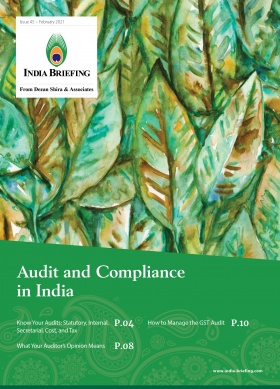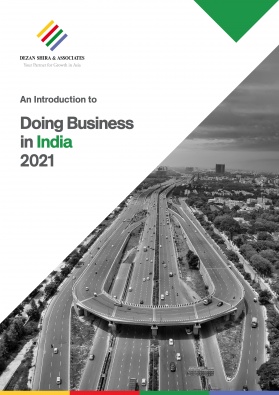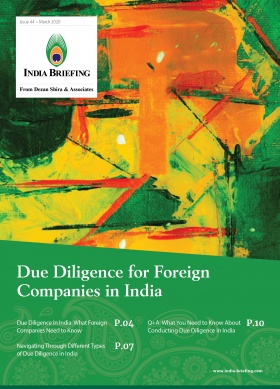Transfer Pricing in India: Methods, Compliance, and Third-Party Service Providers
This article outlines the accepted transfer pricing methods in India and how a third-party service provider can assist foreign firms with compliance. This article is part two of a four-part series. See here for the first part, which covers transfer pricing regulations in India.
In light of the Organisation for Economic Co-operation and Development’s (OECD’s) Base Erosion and Profit Shifting (BEPS) program, tax authorities in most countries have focused on finetuning the regulatory provisions and methods acceptable for transfer pricing.
This has been done by enforcing stricter local transfer pricing regulations/rules, imposing detailed compliance requirements, and invoking ever-increasing scrutiny on related party transactions. It is hence important to ensure that all related party transactions are being performed using the most appropriate charging mechanism and that the prices are in accordance with the arm’s-length principle.
Arm’s-length price
The term ‘arm’s-length price’ is defined in Indian tax law by section 92F of the Income Tax Act, 1961 to mean a price that is applied to transactions between persons other than AEs in uncontrolled conditions.
The arm’s-length price will be determined under section 92C (1) by using the most appropriate method, which is best suited to the facts and circumstances of each particular transaction.
If an enterprise entered into various transactions with different associated enterprises, then the same method will not be applicable to all transactions, instead it will be selected considering the facts and circumstances of every transaction.
The following sections show the methods that have been prescribed by Section 92C of the Act for the determination of the arm’s-length price.
Transfer pricing methods in India
Comparable uncontrolled price (CUP) method
Under this method:
(i) Determine the price charged or paid for the property transferred or services provided in a comparable uncontrolled transaction.
(ii) Such price is adjusted to account for differences, if any, between the international transaction and comparable uncontrolled transactions or between the parties entering into such transactions, which could materially affect the price in the open market.
(iii) The adjusted price arrived at under (ii) is taken to be Arm’s-Length Price in respect of the property transferred or services provided in international transaction.
Resale Price Method
Under this method:
(i) The price at which property purchased or services obtained by the enterprise from an associated enterprise are resold or are provided to an unrelated enterprise, is identified.
(ii) Such resale price is reduced by the amount of normal gross profit margin accruing to the enterprise or to an unrelated enterprise from the purchase and resale of the same or similar property or from obtaining and providing the same or similar services in a comparable uncontrolled transaction, or a number of such transactions.
(iii) The price so arrived at is further reduced by the expenses incurred by the enterprise in connection with the purchase of the property or obtaining the services.
(iv) The price so arrived is adjusted to take into account the functional and other differences including differences in accounting practices, if any, between the international transaction and the comparable uncontrolled transactions, or between the enterprises entering into such transactions, which could materially affect the amount of gross profit margin in the open market.
(v) The adjusted price arrived at (iv) is taken to be arm’s-length price in respect of the purchase of property or obtaining of the services by the enterprise from the associated enterprise.
Cost Plus Method
Under this method:
(i) The direct and indirect costs of production incurred by the enterprise in respect of property transferred or services provided to an associated enterprise, are determined.
(ii) The amount of a normal gross profit mark-up to such costs (computed according to the same accounting norms) arising from the transfer or provision of the same or similar property or services by the enterprise, or by an unrelated enterprise, in a comparable uncontrolled transaction, or a number of such transactions, is determined.
(iii) The normal gross profit mark-up referred to in sub clause (ii) is adjusted to take into account the functional and other differences, if any, between the international transaction or the specified domestic transaction and the comparable uncontrolled transactions, or between the enterprises entering into such transactions, which could materially affect such profit mark-up in the open market.
(iv) The costs referred to in sub-clause (i) are increased by the adjusted profit mark-up arrived at under sub-clause (iii).
(v) The sum so arrived at is taken to be an Arm’s-Length Price in relation to the supply of the property or provision of services by the enterprise.
Profit Split Method
Under this method:
(i) The combined net profit of the associated enterprises arising from the international transaction in which they are engaged, are determined.
(ii) The relative contribution made by each of the associated enterprises to the earning of such combined net profit is then evaluated on the basis of the functions performed, assets employed or to be employed, risks assumed by each enterprise, and on the basis of reliable external market data that indicates how such contribution would be evaluated by unrelated enterprises performing comparable functions in similar circumstances.
(iii) The combined net profit is then split among the enterprises in proportion to their relative contributions, as evaluated under (ii).
(iv) The profit thus apportioned to the assessee is taken into account to arrive at arm’s-length price in relation to the international transaction.
Transactional Net Margin Method (TNMM)
Under this method:
(i) The net profit margin realized by the enterprise from an international transaction entered into with an associate enterprise is computed in relation to costs incurred or sales affected or assets employed or to be employed by the enterprise or having regard to any other relevant base.
(ii) The net profit margin realized by the enterprise or by an unrelated enterprise from a comparable uncontrolled transaction or a number of such transactions is computed having regard to the same basis.
(iii) The net profit margin referred to in (ii) arising in comparable uncontrolled transactions is adjusted to take into account the differences, if any between the international transaction and the comparable, uncontrolled transactions, or between the enterprises entering into such transactions, which could materially affect the amount of net profit margin in the open market.
(iv) The net profit margin realized by the enterprise and referred in (i) is established to be the same as the net profit margin referred in (iii).
(v) The net profit margin thus established is then taken into account to arrive at an arm’s-length price in relation to the international transaction.
Transfer pricing compliance
As explained above, all income acquired by a company or associated enterprise by means of any international transaction is calculated at the arm’s-length price.
The respective methods to calculate the arm’s-length price are applied depending on the nature and type of the transaction, the nature of the group or the association involved, or any other features of the transactions involved. If there are two or more appropriate prices assumed for a certain transaction, the arm’s-length price will be calculated as the average of the prices. The group or person who does not adhere to these rules is liable to pay the penalties as imposed by the CBDT.
Maintaining TP documentation Taxpayers are required to maintain information related to international transactions undertaken with AEs. The rules prescribe detailed information and documentation that must be maintained by the taxpayer.
Such requirements can broadly be divided into two parts.
The first part includes information on the ownership structure of the taxpayer, a group profile, and a business overview of the taxpayer and AEs, including prescribed details such as the nature, terms, quantity, and value of international transactions. The rules also require the taxpayer to document a comprehensive transfer pricing study.
The second part of the rules require that adequate documentation be maintained to substantiate the information, analysis, and studies documented under the first part of the rule. It also contains a recommended list of such supporting documents, including government publications, reports, studies, technical publications, and market research studies undertaken by reputable institutions, price publications, relevant agreements, contracts, and correspondence.
Taxpayers having aggregate international transactions below the prescribed threshold of INR 10 million and specified domestic transactions below the threshold of INR 200 million are relieved from maintaining the prescribed documentation. However, it is essential that the documentation maintained should be adequate to substantiate the arm’s-length price of the international transactions or specified domestic transactions.
Companies to which transfer pricing regulations are currently applicable are required to file their tax returns on or before November 30, following the close of the relevant tax year.
The prescribed documents must be maintained for a period of eight years from the end of the relevant tax year and must be updated annually on an ongoing basis. It is also imperative to obtain an independent accountant’s report in respect to all international transactions between AEs, and the same must be submitted by the due date of the tax return filing, on or before November 30.
It is advisable for entities doing business in India involving international transactions to ensure their accounting practices and tax assessment includes compliance with transfer pricing regulations. Revenue authorities in India have lately been sharpening their focus more widely on transfer pricing matters.
How a third-party service provider can assist your company to be compliant with TP norms
Reliable professional services providers can support your company across a range of actions from proper documentation to helping your business practice match TP policies and interpreting the intent of tax authorities in your field of operation. Their legal and tax teams can draft and/or review contracts entered into between related entities to ensure compliance with tax laws. Besides this, a good tax specialist service provider will take care of the following to ensure your company is aligned with TP best practices and has minimized risk exposure to incompliance or improper reporting.
Transfer pricing documentation
Appropriately pricing and documenting your business’ intercompany transactions to comply with various countries’ rules and legislation is imperative in managing tax risk and avoiding triggering tax investigations. Proper documentation of intercompany transactions is also the first line of defense when your transfer pricing practices are challenged by tax officials. Finding the right approach to your documentation needs requires understanding the rigorous transfer pricing scrutiny in the region where you operate so that you meet the local requirements, particularly in situations of high risk.
Conducting benchmark study
It is important that companies ensure their related party transactions satisfy the arm’s length principle. A good professional services provider will provide assistance in preparing, updating, and evaluating economic (comparability, benchmarking) studies, aimed at verifying prices and margins set in controlled transactions by benchmarking the arrangements in such transactions against comparable transactions concluded by independent entities.
Tax audits
The company’s internal or third-party tax team can prepare the enterprise for potential tax audits as well as support during its course. Services offered by a good transfer pricing team include preparation of appropriate arguments, assistance in conducting studies and gathering documentation supporting the taxpayer’s position regarding transfer pricing.
Transfer pricing policy
An appropriate transfer pricing policy helps to achieve the best possible settlement between related parties as well as maximize tax profits. A reliable service provider can assist with respect to the following:
- Planning and implementation of transfer pricing policy, in order to achieve the best possible settlement between related parties, in accordance with the tax laws.
- Verification of current policy and procedures defining rules of intercompany settlements regarding the existing risks.
- Drawing up the settlement rules and principles (such as the calculation of the level of prices/margins) that meet specific economic goals.
- Identification of the transactions and allocation of profits between headquarters and affiliates.
About Us
India Briefing is produced by Dezan Shira & Associates. The firm assists foreign investors throughout Asia from offices across the world, including in Delhi and Mumbai. Readers may write to india@dezshira.com for more support on doing business in in India.
We also maintain offices or have alliance partners assisting foreign investors in Indonesia, Singapore, Vietnam, Philippines, Malaysia, Thailand, Italy, Germany, and the United States, in addition to practices in Bangladesh and Russia.
- Previous Article PLI Scheme for Telecom and Networking Products Manufacturing in India: First List of Benefeciaries
- Next Article What is PM Gati Shakti Yojana? India’s National Master Plan for Multimodal Connectivity to Economic Zones









